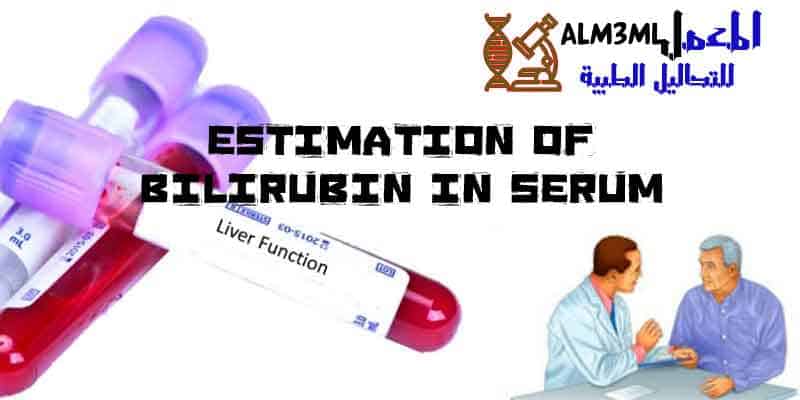
Estimation of Bilirubin in serum
Introduction
Bilirubin is an orange – yellow pigment , a waste product primarily produced by the normal breakdown of heme
This form of Bilirubin is called unconjugated (indirect) bilirubin ,not soluble form ,to convert it to soluble form and eliminate it ,The unconjugated bilirubin is carried by Albumin to the liver , where it converted to conjugated (direct) form , soluble , through UDP – glucuronyl transferase with glucuronic acid
Because the bilirubin is chemically different after it goes through the conjugation in the liver , lab tests can be differentiate between the unconjugated(indirect) or conjugated (direct) bilirubin
Conjugate bilirubin is water soluble form and reacts directly when dyes are added to the blood sample so , it called also direct bilirubin
Unconjugated bilirubin is non-water soluble , free form ,doesn’t react to the reagents until alcohol is added to the solution so , it called indirect bilirubin
Total bilirubin measures both direct and indirect bilirubin
Principle
Diazotization is a principle of bilirubin test
Total bilirubin is coupled with diazotized sulfanilic acid in the presence of caffeine to give an azodye
Normal saline is used to determination of direct bilirubin instead of caffeine
Sulfanilic acid + HNO2 (NaNO2 + dil Hcl) → diazotized – sulfanilic acid
Bilirubin + diazo reagent + (caffeine + benzoate) → Acid – Azo bilirubin ( pink color)
Acid – azo bilirubin + Alkaline tartarate soln → Alkaline – Azo bilirubin (blue green color) , read at 578 nm
Normal range
Total Bilirubin : up to 1 mg % ( 0.3 – 1 ) mg %
Direct Bilirubin : 0.1 – 0.4 mg %
Indirect Bilirubin : 0.2 – 0.7 mg %
Reagents
Sulfanilic acid
Sodium nitrite (NaNO2)
Caffeine and sodium benzoate ( act as a catalyst)
Alkaline tartarate
Saline solution (used in determination of direct bilirubin instead of caffeine)
Procedure with kits in lab
Depend on colorimetric technique
| Reagents | Total bilirubin | Direct bilirubin | Reagents | ||
| Test | Blank test | Test | Blank test | ||
| R1 | 100µ | 100µ | 100µ | 100µ | R1 |
| R2 | 25µ | – | 25µ | – | R2 |
| R3 | 500µ | 500µ | 1000µ | 1000µ | Saline |
| Serum | 100µ | 100µ | 100µ | 100µ | Serum |
| Mix , wait for 10 min at RT then add R4 | Mix , wait for 5 min at RT , read at 545 nm | ||||
| R4 | 500µ | 500µ | |||
| Mix , wait for 5 min at RT , read at 545 nm |
R1 : Sulfanilic acid
R2 : NaNO2
R3 : Caffeine
R4 : Tartarate solution
Calculations
Total bilirubin (mg %) =Asample X 10.8
Direct bilirubin (mg %) =Asample X 14.4
Indirect bilirubin (mg %) = Total – Direct
:Direct bilirubin level increased in
Hepatocellular disease as cirrhosis and hepatitis
Blockage of bile ducts due to gall stones or tumers
Drug reaction
:Indirect bilirubin level increased in
Hemolytic anemia
Transfusion reaction
Cirrhosis
Gilbert syndrome (low levels of glucoronyl transferase
?Q: Why make sample blank in bilirubin test
To avoid color interference where serum is yellow color and alkaline azo-bilirubin color from yellow to blue green so , make sample blank by adding all contents except NaNO2
?Q:The media must converted from acidic to basic = Role of alkaline tartarate solution
Pink color low in sensitivity and can’t measure low concentration
Maybe due to presence of high turbidity , but blue green color have high sensitivity and measure low concentrations
Pink color low in sensitivity and can’t measure low concentration
Maybe due to presence of high turbidity , but blue green color have high sensitivity and measure low concentrations
